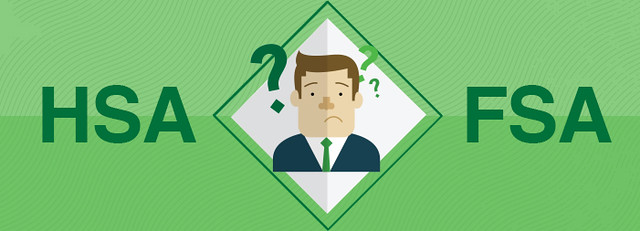
Many see these letters and think, what are they?
Others confuse the two, and think HSA and FSA are the same type of account.
Health savings plans and flexible spending accounts become accessible to you based on what kind of health coverage plan you sign up for, but both let you tuck away pretax dollars for future qualified medical costs. Using one or both of these accounts can mean big tax savings that you may not be aware of.
However, HSAs and FSAs have distinct differences as well as advantages. Here are the ins and outs of each.
Health Savings Account – Created in 2003, your contributions are made pretax, money in the account grows tax-deferred, and distributions for HSA qualified health-care expenses are tax-free.
Flexible Spending Account – Been around since the 70’s, your contributions are made pretax and distributions for FSA qualified health-care expenses are tax-free.
The Differences-HSA vs. FSA
| HSA | FSA |
|---|---|
| Need to be enrolled in a high deductible health plan. | No restrictions on type of health insurance. |
| Individually owned | Employer owned, nontransferable. |
| Unused amount can rollover from year to year. | Cannot rollover to another year. (Two exceptions, employer can offer one option or none; can use funds during extended grace period of 2.5 months or can rollover up to $500) |
| Can earn interest; invest in stocks, bonds, and securities. | Does not earn interest. |
| Can only be spent on healthcare. | Can be spent on healthcare or childcare. |
| Can only spend what is in account at given time. | Can spend more than you have in account as long as payroll deductions will make up for it by the end of the year. |
| Individual is responsible for identifying qualified medical expenses for tax reporting and documentation. | Employer is responsible for following IRA guidelines for distributions. Individual has to file reimbursement request to employer to be approved. |
| Contribution limits for 2015 are $3,350 for individuals and 6,650 for those with family coverage. An additional $1,000 can be contributed if over the age of 55. | Contribution limit for 2015 is $2,550 for individuals and 5,000 for dependent care FSAs. |
| If you do not need the money for medical expenses after age 65, it can be treated as a Medical IRA. You can spend it however you want, paying only regular income tax on distributions. | Individual decides how much they want contributed pretax to FSA account from payroll during open enrollment. This generally cannot be changed during a plan year. |
The two accounts sound similar but have important differences which give each their advantages. Discuss with your financial planner if you would qualify for either of these options and how they fit into your financial plan.

